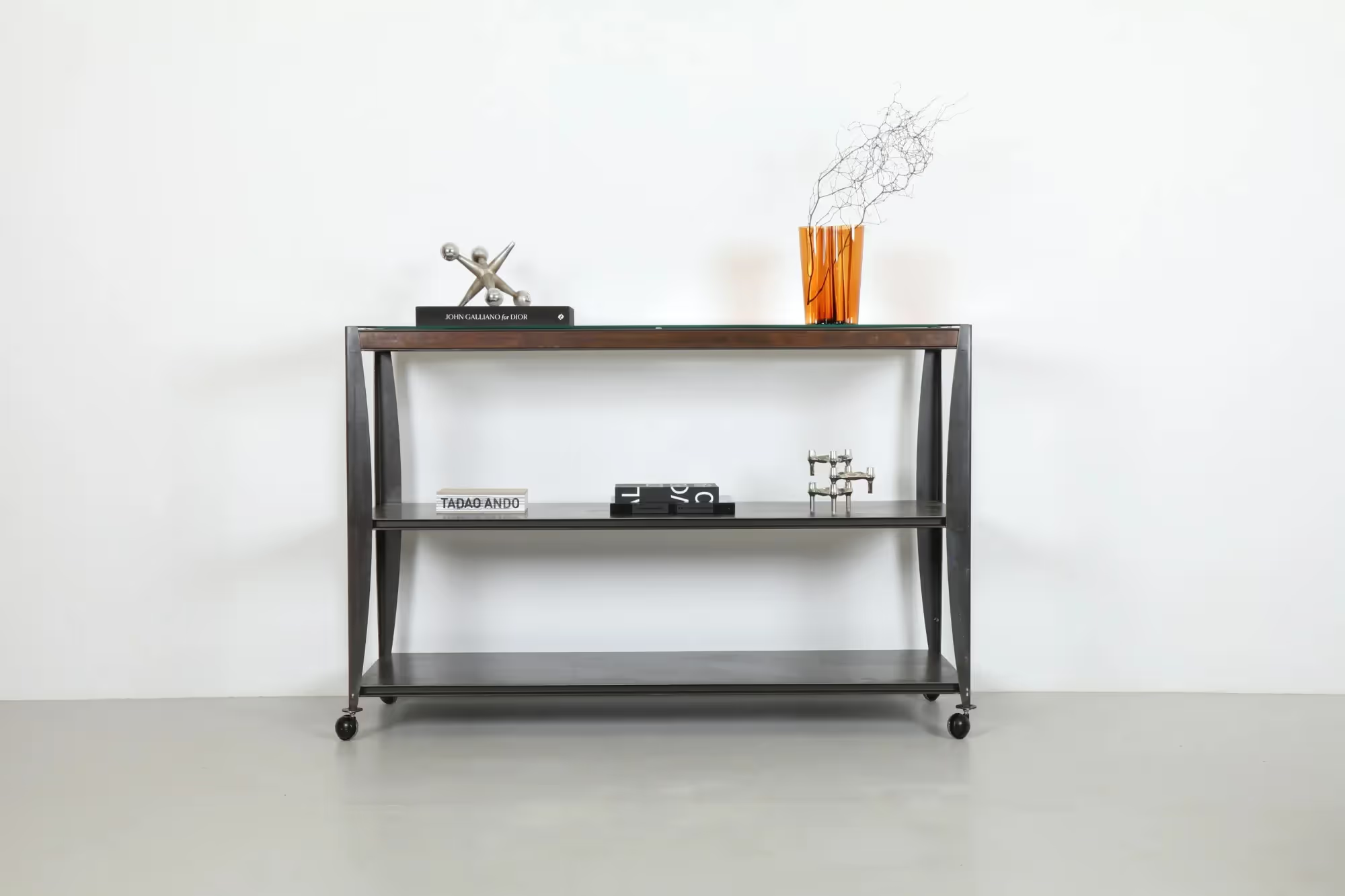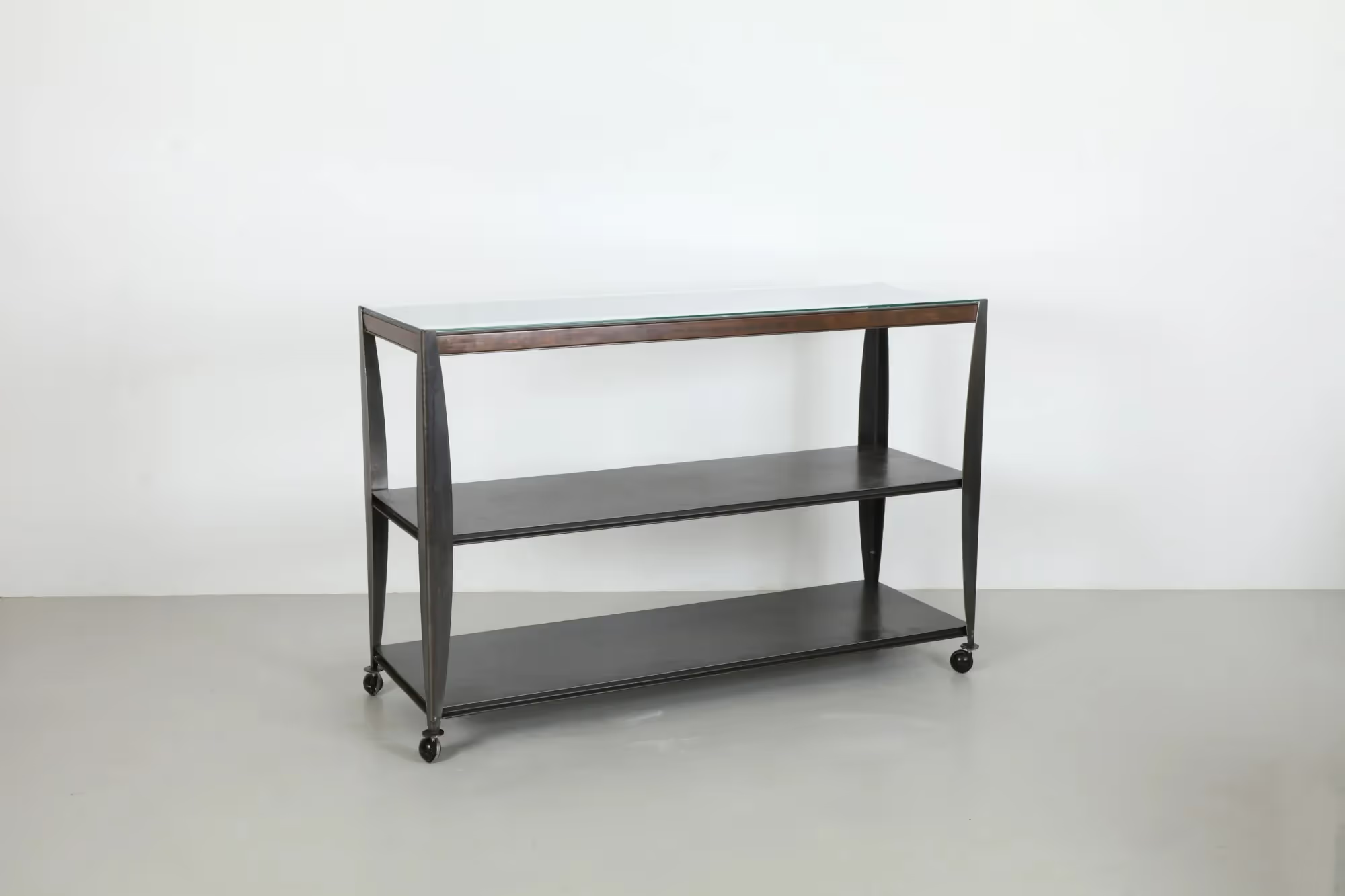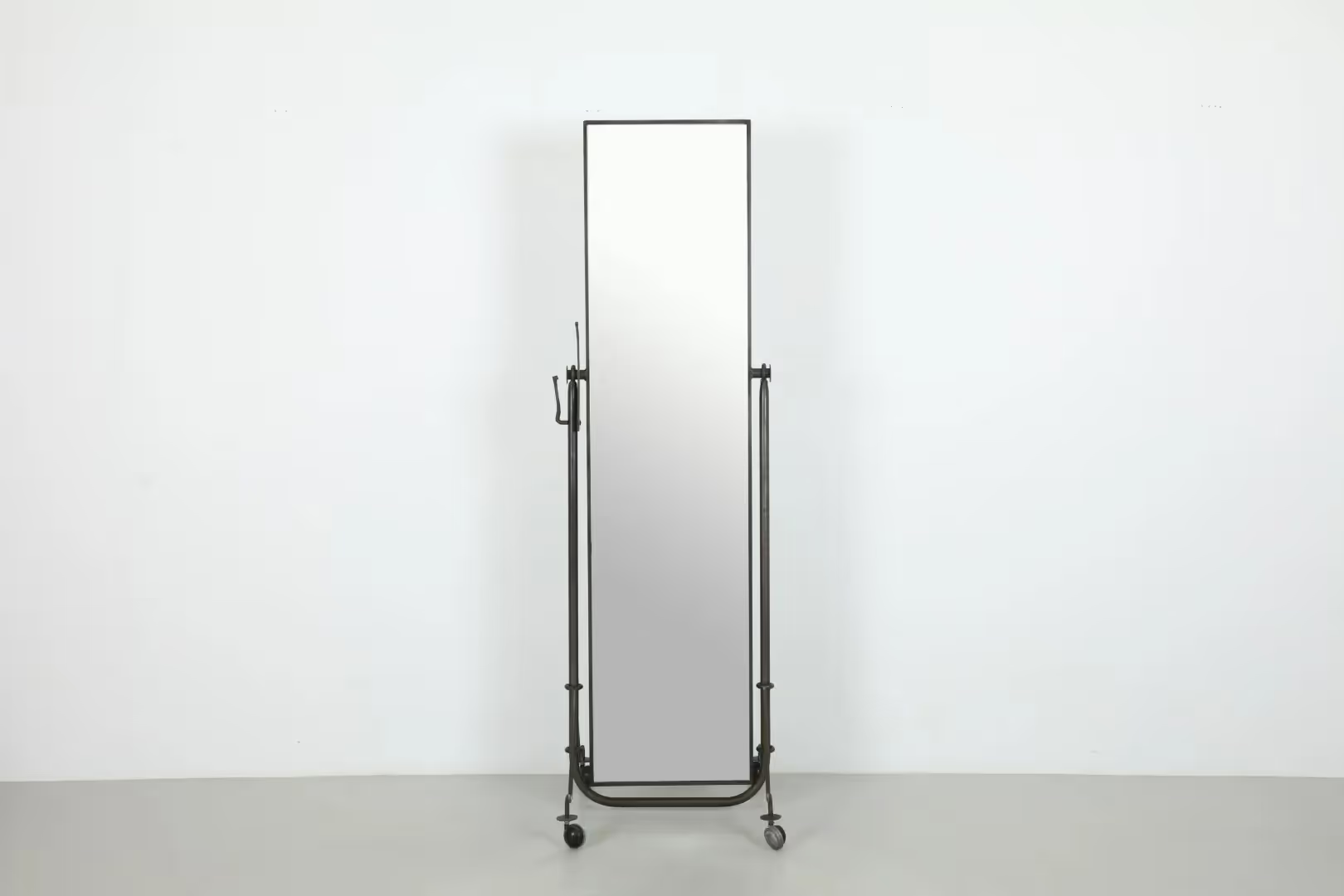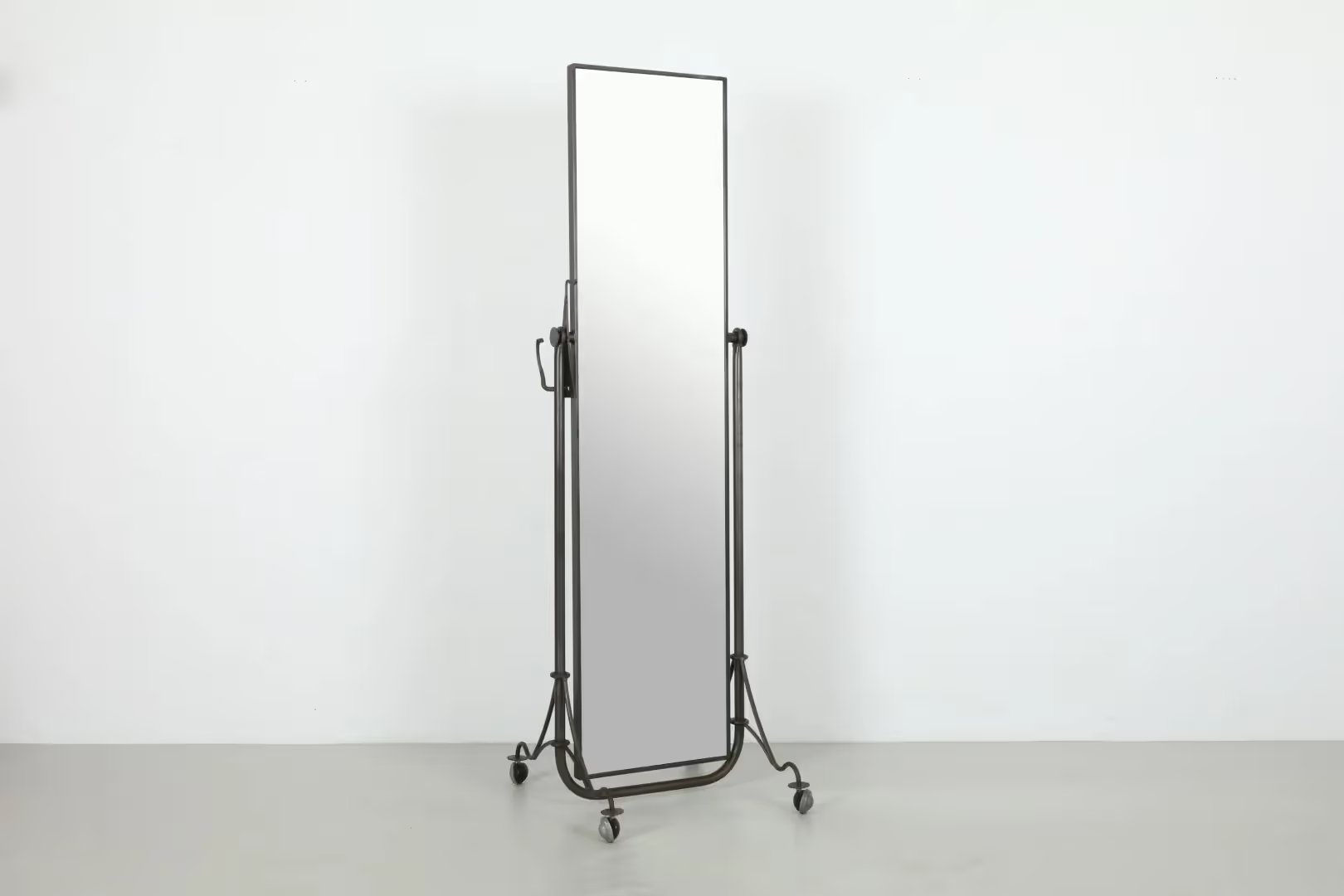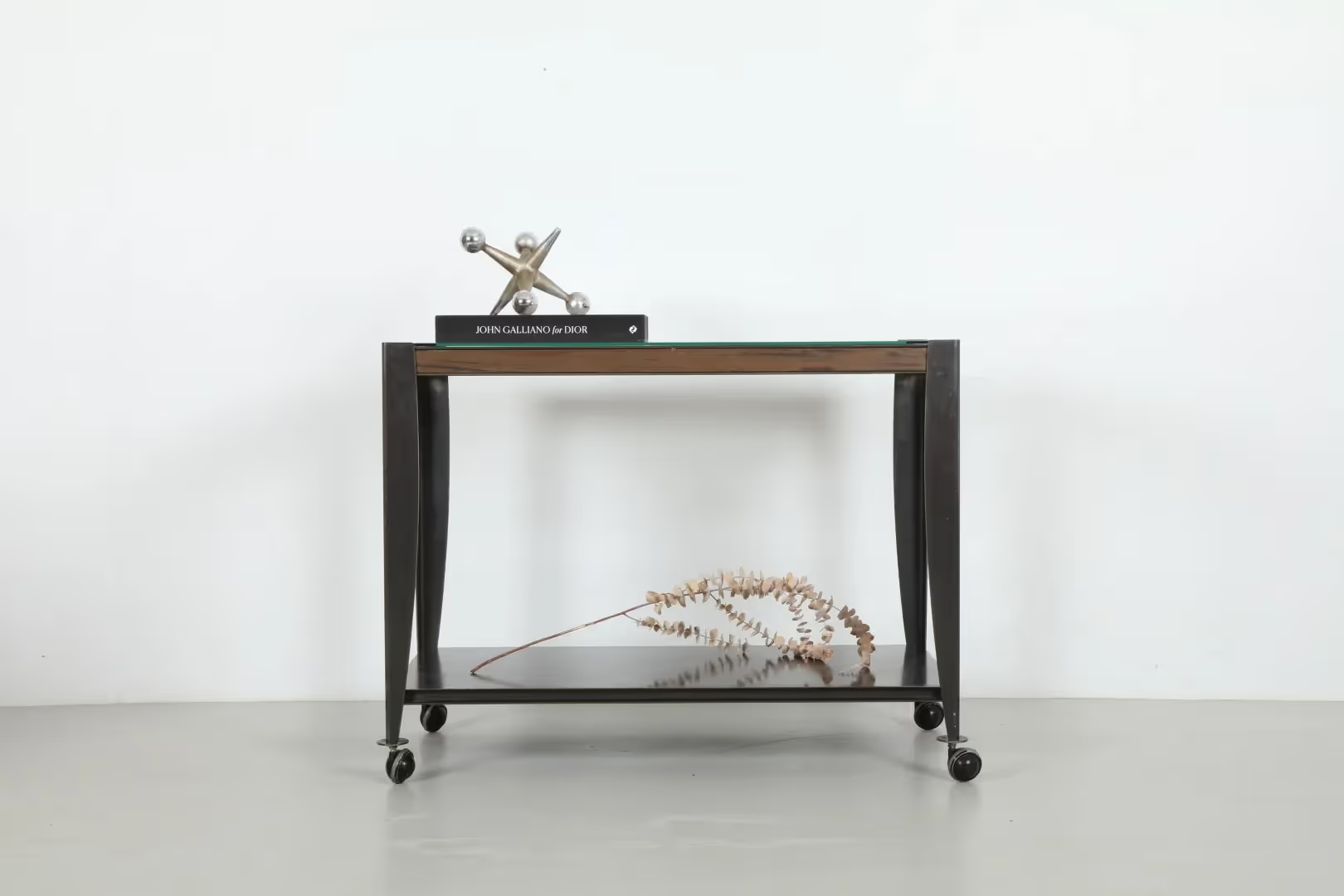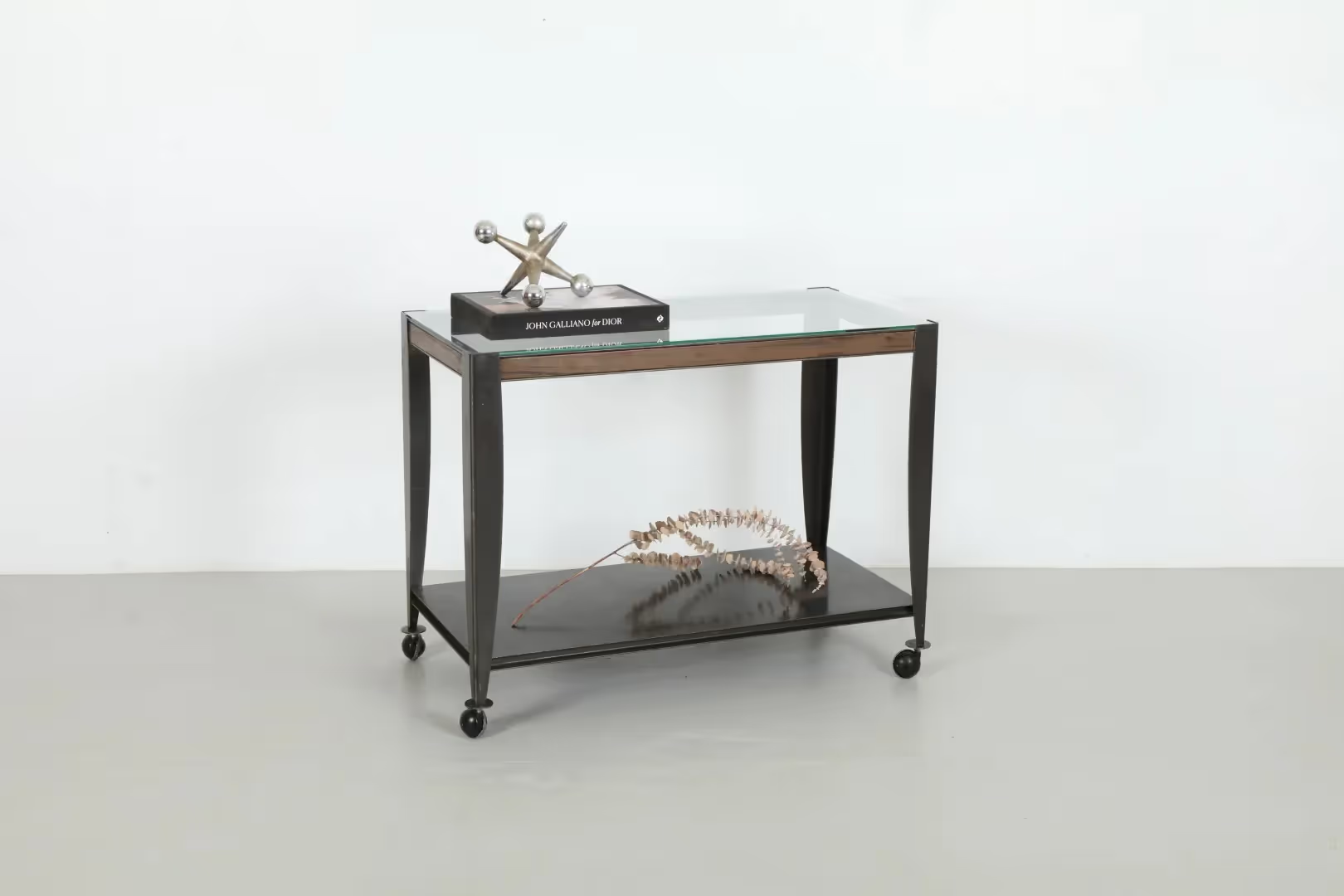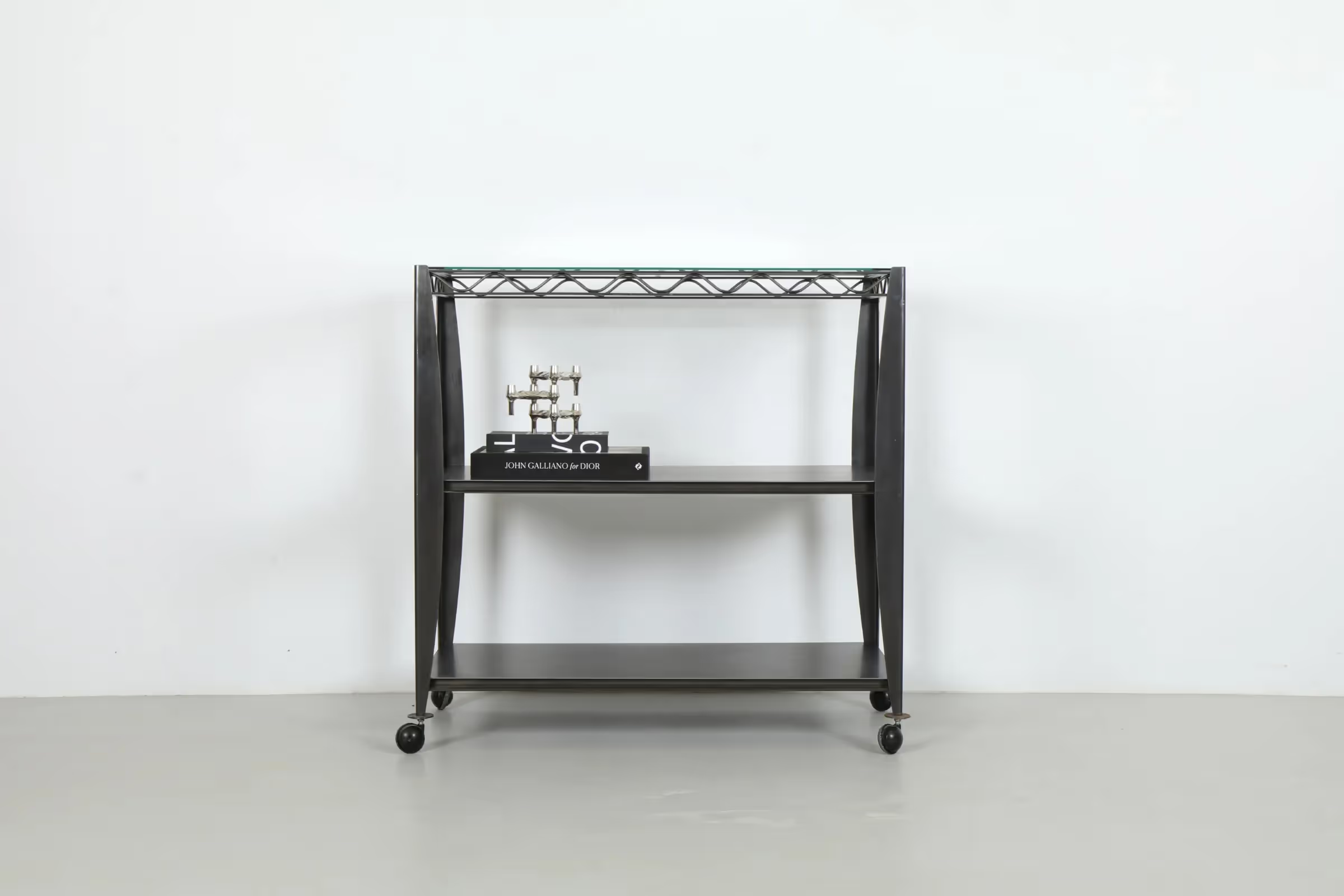.svg)
Gary Hunt’s work is defined by a respect for steel. A material not often embraced in furniture making but in Garys hands it comes alive with a refined elegance and defiant attitude. There is a stripped back honesty to Hunts work, an energy that elevates the medium while dismissing preconceptions.
Music has a significant influence on Hunt’s design aesthetic. In the late 1970’s Gary was the drummer for the Terrorways, a crowd favourite at the infamous punk dive Zwines. The Terrorways featured on the compilation album AK79, considered the defining record of the Auckland punk scene, and included in Nick Bollinger’s book ‘100 Essential New Zealand Albums’ (2009).
Hunt’s fabrication skills were acquired from a diesel engineering apprenticeship, working with heavy mechanical equipment. Hunt moved to the UK in the 1980s and while living there combined his musical and engineering backgrounds to make percussion instruments. It was during this time that he worked closely with a lighting designer and became more focused on design at a conceptual level.
On returning to New Zealand Gary focused on elevating his craft and pushing his creative ability. He worked for several leading architects making bespoke furniture and fittings while also producing his own designs. In 1988 Hunt became a member of the Artiture Group, who were highly influential in promoting contemporary New Zealand furniture by leading alternative designers.
By the late 1980s, Hunt had a strong following in the art and design community. His work was showcased in several contemporary furniture exhibitions. His mild steel 'Bladerunner' chair was selected for the progressive 1989 'New Zealand Contemporary Furniture' exhibition by the Auckland Museum alongside other design luminaries such as Humphrey Ikin, Michael Draper, Stepane Rondel and David Trubridge.
1989 was a big year, Hunt’s bar stool set titled ‘Head Charge’ was selected to be represented at the International Contemporary Furniture Fair in New York (ICFF). Hunts design was described as a striking four-piece bar set that pushed the boundaries of what can be expected from steel furniture.
The 1990s was a productive decade for Hunt, he worked closely with creatives in the New Zealand fashion industry. Elisabeth and Neville Findlay from Zambesi commissioned Hunt to collaborate on the fitout and furniture for their fashion stores. Chris Cherry also worked closely with Hunt to create the interiors of the Workshop stores.
Today Gary Hunt continues to focus his creative energy on his passion for music, design, and steel.
Sources:
- 1990 article by Debra Millar
- Audioculture.co.nz
- Stools designed by Gary Hunt for Brilliant
- Zambesi Display Trolley 'Variant A' by Gary Hunt and Neville Findlay
- Bladerunner Chair photographed for Objectspace / photograph by Sam Hartnett
- Catalogue / 1988 'New Zealand Contemporary Furniture' exhibition by the Auckland Museum
- Poster for the Terrorways designed by Terence Hogan in 1979
- Poster for the 2nd Artiture Exhibition 1988 / Te Tuhi Art Gallery
- Poster for the 5th Artiture Exhibition 1991 / Auckland War Memorial Museum, EPH-PT-6-222

.avif)
.avif)









